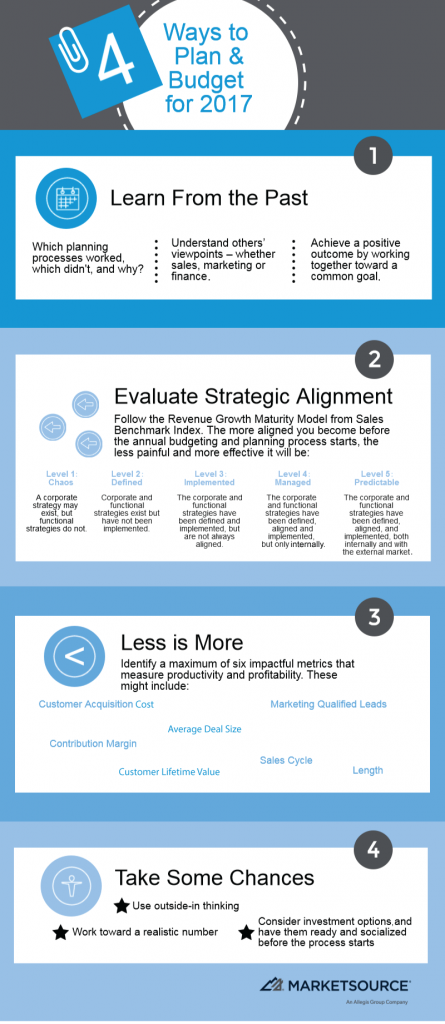Right now, you probably are sitting at your desk, on a plane, or in your hotel room, working tirelessly. You need to get that prospect to respond, finish that presentation, return that phone call or email, and close that deal. Before you prepare for your next meeting, pause for a second, and take a look at your calendar.
September is fast approaching, and Q4 is on the horizon. Does it matter? Yes, because the annual planning and budgeting season is fast approaching. And, although achieving your revenue budgets in Q1 through Q3 is important, your most important annual revenue is your run rate at the end of Q4. This number sets a base for recurring revenue the following year, according to TechCrunch.com.
Jack and Suzy Welch recently wrote an article entitled, “This is the Most Mind-Numbing Ritual in Business (But Doesn’t Have to Be).” The title sums up the initial feelings of most people regarding this annual back-and-forth. The good news is that you still have time to get ahead of it this year – but not much time.
Following are four things to consider before you begin the annual planning and budgeting process with your business partners.

- Let the past predict the future. Spend some time really thinking about how this process has played out for you in the past. What worked? What didn’t? Who will play a critical role in this process? What is his agenda? Regardless of whether you are in sales, marketing or finance, or if you’re a senior executive, you need to understand the points of reference of other people to be effective. Have those conversations now, and put in the work to really comprehend what a positive outcome looks like for your business partners in this process. Determine how you can collaborate to enable that positive outcome for them. When you do, your own chances of having a positive outcome will increase exponentially.
- Evaluate alignment. If you take the to time execute Step 1, you will have a much better grasp on the alignment of your team. Getting aligned is critical to your long-term success. A good framework that quickly evaluates your level of strategic alignment is the use of Sales Benchmark Index’s Revenue Growth Maturity Model. The five levels of revenue growth maturity range from Level 1 (chaos) to Level 5 (predictable). How would you rate your company, business unit, division or team? The more aligned you can become before the annual budgeting and planning process begins, the less painful and more effective it will be. If you are at a high level of alignment, you can move on with confidence to Steps 3 and 4 to maximize benefit.
- Less is more. Is your team pouring through hundreds of spreadsheets and page after page of information, statistics and measurements, all carefully manipulated to bolster the story or point that you, as the author, are trying to make? Do you get the annual “deck” of data that you have seen the same way for the last several years? Is that data used to back into a standard growth number that comes down from corporate, but has little basis in predictable reality? This year, opt for the less-is-more approach. Start now, and get your team to agree on no more than six predictable and, if measured and acted upon correctly, impactful metrics. Assure you choose leading and lagging metrics that, ideally, measure productivity and profitability. Customer acquisition cost, customer lifetime value, sales cycle length, contribution margin, average deal size, and marketing qualified leads are several options to consider. Regardless of what you choose, focus relentlessly on a few measurements that you know have a realistic chance of predicting outcomes.
- Take some chances. If you have always used the same process, proposed the same standard changes, and accepted the same outcome, then nothing significant is going to change. Assure that your number is realistic. Do you usually meet your objective a month after the year has started? Is your company using inside-out vs. outside-in thinking? Could you change the game with more investment this year? Consider the options you need to have on the table now, before the budgeting and planning process starts. What if you had those options ready and socialized before the process started? Finally, what are you going to do differently this year?
Have the conversation with your business partners now to better understand their points of view. Evaluate how aligned your team is as well as how aligned you are to your customers and the market in which you compete, and understand how that may impact your ability to succeed. Agree on a few predictable measurements. Take some chances.
Change starts with you. Follow the four steps above to impact the annual budgeting and planning process in a positive way, while you still have time.
Once you set your goals, MarketSource can help you achieve them. It starts with an Assessment for your company. MarketSource’s sales experts will work with you to define your challenges and design a turnkey solution that produces results in the area of gaining new customers, launching new products, growing market share, optimizing sales expense, or maximizing a mature product.
Our sales teams deliver more than $6 billion in revenue for many of the most well-respected brands in the world and a diverse mix of forward-thinking small- and medium-sized businesses. You can learn more about this topic and MarketSource’s Proprietary Process, Empowered People, and Proven Performance, by contacting us today.

